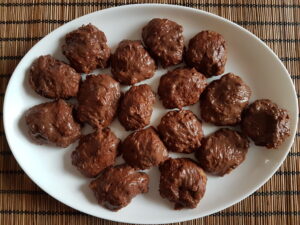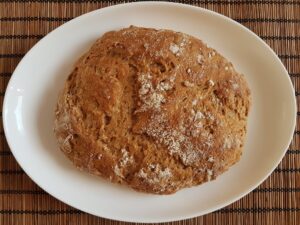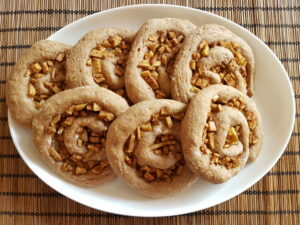Ruchmehl is a special flour used in Switzerland and some parts of Germany. It is a darker, less processed flour compared to wheat flour type 405 (in Germany) or type 550 (in Switzerland), which means it contains more nutrients and fiber. Regular ruch flour is made from the whole grain of wheat, retaining most of the germ and marginal layers of the grain. As a result, it retains more nutrients than finer flours. It also contains higher levels of protein and minerals compared to light wheat flour.
It is important to note that ruch flour may not be readily available in other countries, and there may be regional or local equivalents that have similar properties. If you can’t find ruch flour, you could try using another whole wheat flour as a substitute. I bake my ruchmehl bread with spelt flour type 1050.
Ruchmehl bread with spelt flour
As a substitute for the ruch flour made from wheat, my ruchmehl bread with spelt flour is made with spelt flour type 1050. Spelt flour type 1050 is a special flour that is made from the whole spelt grain. As a result, the germ and marginal layers of the grain are largely preserved. It is one of the darker and less processed flours, which means that it contains more nutrients and fiber than finer flours.
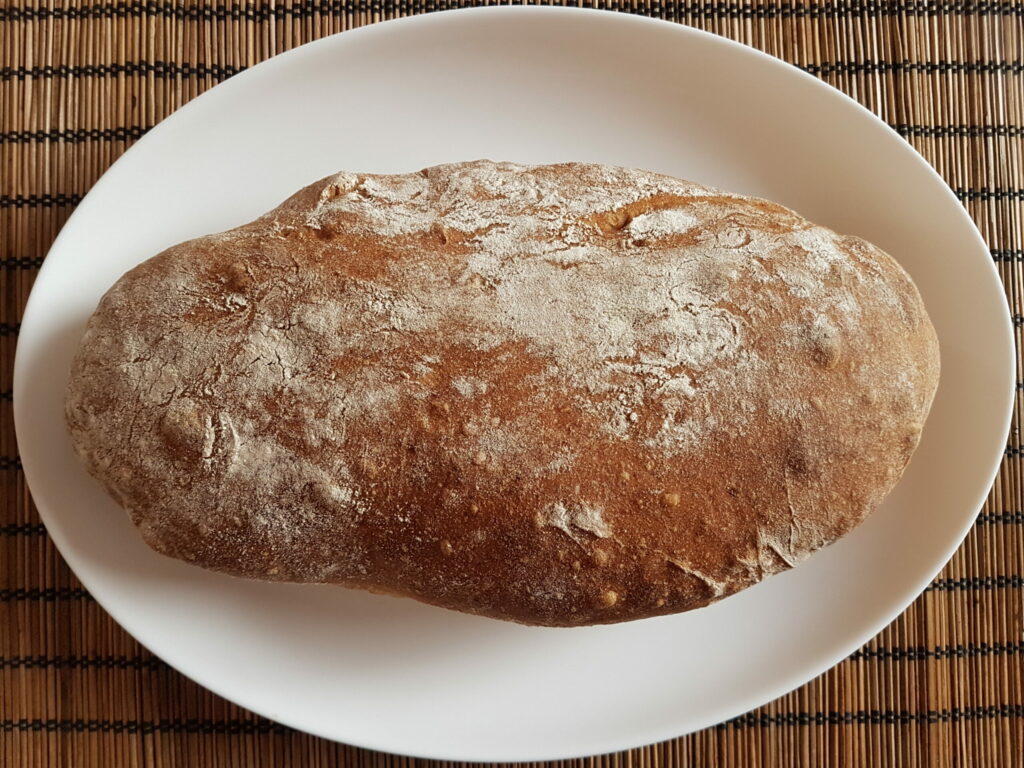
Ruchmehl bread with spelt flour
Ingredients
Method
- Mix spelt flour type 1050 with 300ml of warm water and knead for 1 minute until a homogeneous dough is obtained. Then let rest covered for 1 hour.
- Mix psyllium husks with 80 g water and let stand for approx. 10 minutes so that the psyllium seeds can swell.
- Put the flour dough, the psyllium husks and the yeast (dissolve the yeast with a little warm water (approx. 3 tsp.)) and the salt in a bowl and knead everything with a food processor for approx. 10 minutes. Alternatively, knead well by hand. The dough is relatively soft. If the dough is too soft, then add another 1 – 2 tablespoons of flour.
- Cover and let rise for 1 hour. Then remove from bowl with wet hands. Transfer to a floured surface.
- Knead again briefly and form into an oblong loaf. Place the lower side over the upper side, as with a stollen. Place on a baking tray with baking paper. Cover again and let rise for 30 minutes.
- Preheat the oven to 240 degrees Celsius top and bottom heat. Insert the bread, reduce the temperature to 220 degrees. Place a container of hot water on the bottom shelf.
- Bake bread for about 50 minutes. After 20 minutes, reduce temperature to 200 degrees Celsius. After another 15 minutes, reduce to 190 degrees Celsius.
Notes
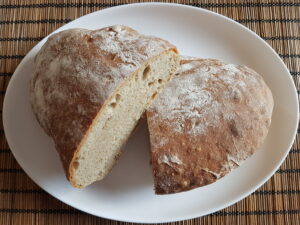
Tip
Using sourdough or a pre-dough will give a different taste and texture to the bread. Let the dough rest longer to give it time to develop flavor and texture. A slower fermentation process can improve the flavor.
Also take a look at my Ruchmehl rolls made from spelt flour.
Interesting to know
Spelt flour type 1050 and whole spelt flour can be well combined. This changes the structure of the bread and makes it firmer.

